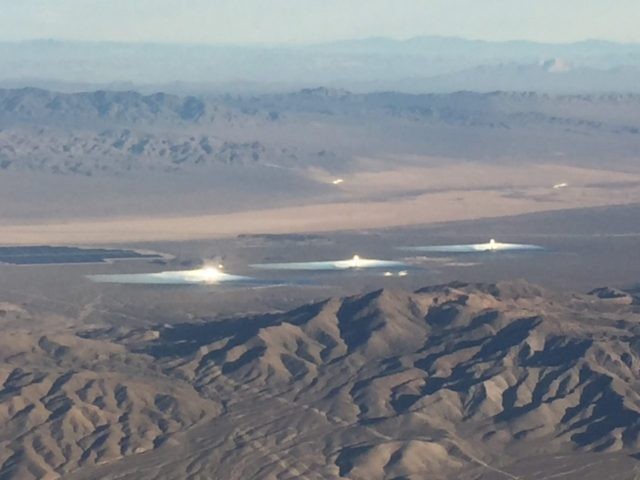The BrightSource Ivanpah Solar Electric Generating Facility, which uses 320,000 mirrors to create thermal energy, still qualifies under state rules as an alternative energy source, despite using about 1.4 billion cubic feet of natural gas a year, according to a report by the Press Telegram.
The California Air Resources Board’s most recent analysis reportedly found that during Ivanpah’s second year of operation, carbon emissions from gas, used to focus Ivanpah’s mirrors at night, jumped by 48.4 percent, to 68,676 metric tons.
The joint venture between BrightSource Energy, NRG, Google and Bechtel was approved by the Obama administration as its biggest alternative-energy project on public lands. The project also received $1.6 billion in taxpayer loan guarantees, and $600 million in federal tax credits, to reduce carbon emissions by 400,000 tons of carbon-dioxide emissions per year.
NRG operators also assured California that the project would create 2,636 jobs during the project’s construction, and pay $300 million in state and local tax revenues over the life of the project.
But carbon emissions data from the U.S. Energy Information Administration demonstrats that natural gas consumption at Ivanpah increased by about 7 percent in the first three quarters of 2016, compared to the prior year.
The 450 California power plants, manufacturing facilities and other operations in the state facilities that produce 25,000 or more metric tons of carbon dioxide per year are required to slash carbon dioxide emissions, or buy pollution credits, either from those that shut down activities, or from designated alternative energy producers.
Southern California Edison, PG&E, and other utilities are under a state mandate to acquire 33 percent of their electricity from renewable sources by 2020, and 50 percent by 2030.
Ivanpah is designated as a renewable source because it uses 352,000 mirrors to reflect sunlight onto three thermal boilers at the top of large towers. That, in turn, creates steam power that causes huge electric turbines to spin to generate electricity.
But Ivanpah claims that natural gas must be burned at night and during overcast days as a maintenance requirement to heat the towers and keep the turbines online. It also claims this hybrid solution improves the length of time and the amount of solar electricity generated each day. Critics now refer to the hybrid plant as another fossil fuel scam.
David Knox, spokesman for the plant’s operator, Houston-based NRG Energy, told Riverside Press-Enterprise reporter Daniel Danelski that the reason for natural gas use increase was Ivanpah’s increasing its electrical generation: “The reason for this is that the more the units run, the more we use the auxiliary boilers to support that increased operation.”
David Lamfrom, California desert manager for the National Parks Conservation Association, warned Solar Industry magazine: “We obviously made a mistake here.” Not only does the project consume 5.6 square miles of undisturbed public land that is home to the endangered desert tortoise, but Ivanpah has also become one of the larger burners of fossil fuel in California.
Tensions between solar generators and NPCA environmentalists have grown since former Secretary of the Interior Sally Jewell, based on the supposed success of Ivanpah, announced the approval of the 350 megawatt Midland Solar Energy Project in Nevada, and the 100 megawatt Quartzsite Solar Energy Project in Arizona.
Ivanpah has an exemption from state rules to qualify as an alternative energy source, because only 5 percent or less of its electrical generation is due to daylight burning of natural gas, according to the California Energy Commission.
Earlier, Breitbart News noted that Ivanpah fell 55 percent short of its 2014 electrical generation goal of 940,000 megawatt hours, but it did incinerate about 28,000 wild birds. Both issues have improved, but the use of natural gas is far higher than the original business plan.

COMMENTS
Please let us know if you're having issues with commenting.